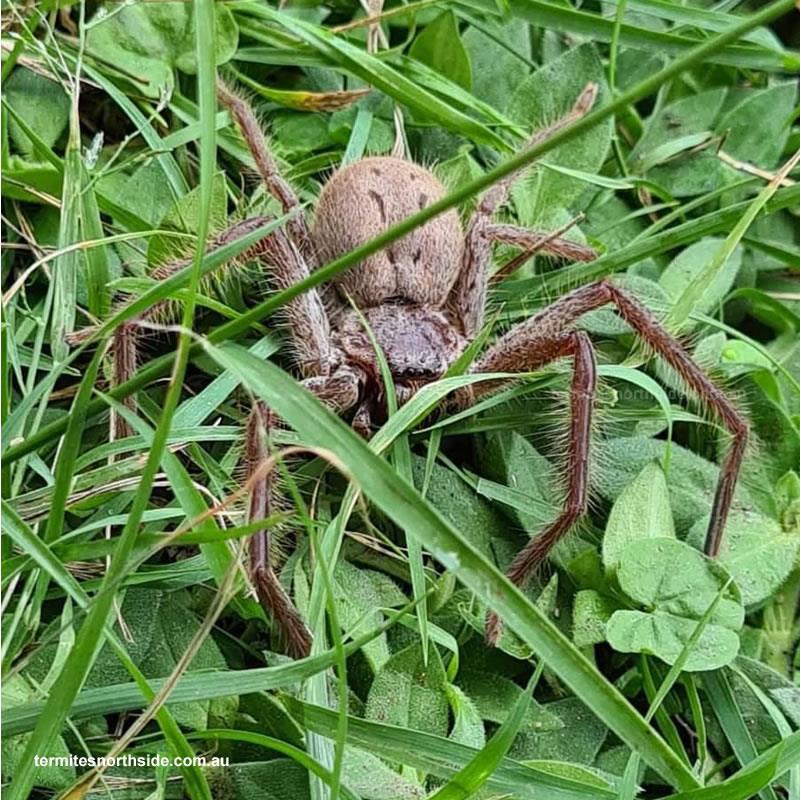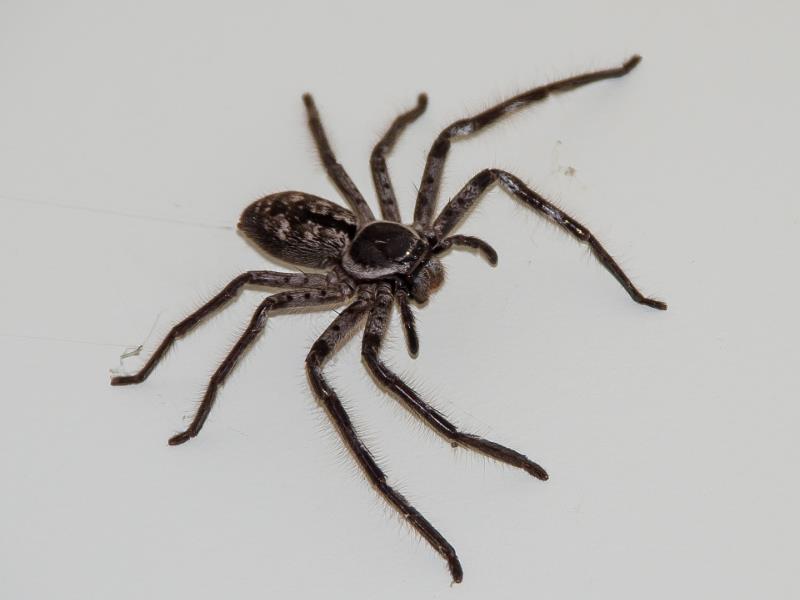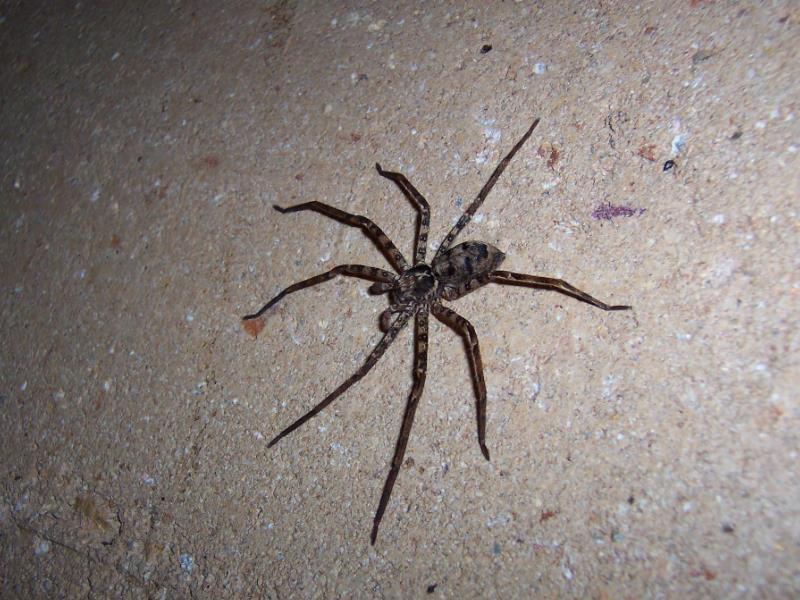Like other spiders, the Huntsman Spider is a member of the order Araneae, and they form the family Sparassidae. There are over a thousand species of Sparassidae around the world, and many of them are radically different to other members of their family. Typically, Sparassidae spiders are likely to appear in tropical regions, including Australia, Asia, and the Americas, and it prefers to stay away from arid or frozen locations, such as Canada, or the Artic.
What Do They Look Like?

A Huntsman Spider in the grass
While the family Sparassidae is quite genetically diverse, there are some distinct features that all spiders within this family share. Sparassidae have simple eyes, and every known species of Sparassidae spiders have exactly eight eyes - however, the placement of those eyes across the head can vary slightly depending on the specific species. If one were to generalise, though, it is commonly safe to assume that the eyes of a Sparassidae spider will be placed in two rows of four, located at the front of their heads.
Huntsman Spiders will also grow to become quite large, with the Heteropoda maxima (known as the Giant Huntsman Spider) of Laos growing to a maximum leg span between 25-30 centimetres - about as large as the standard ruler of a student’s stationery. Because of this large size, Hunstman Spiders can be commonly confused for Tarantulas. However, while the size of the spider cannot be used to distinguish between the two families of spiders, the appearance of the legs is distinctly different. Sparassidae spiders have legs that are twisted in a very specific fashion, similar to those of crabs. In addition, the legs of a Huntsman Spider bear prominent spines, and while both species are quite furry, Sparassidae spiders appear smooth, while the Tarantula retains its iconic, fuzzy appearance.
Unfortunately, attempting to classify a Huntsman Spider by colour alone is nearly impossible. The dominant colour scheme of the family sees the upper body of the spider bearing either a grey or brown colour, the undersides can sometimes bear aposematic black and white marks, and the mouth may be coloured red. With that said, however, some species, such as the Micrommata virescens, can be green, while the Wheel Spider (Carparachne aureoflava) is an off-white or yellow to match the sands of Namib.

A Huntsman Spider
When Are They A Threat?
Huntsman Spiders have been known to act defensively around human beings and will bite humans if the necessity arises. Typically, bites inflicted to humans will be delivered by female Sparassidae spiders in the defence of their young. Fortunately, before biting anything in defence, most Huntsman Spiders will rear themselves menacingly once provoked, giving a human plenty of time to retreat to a safe distance.
How Do They Form New Nests?
Sparassidae spiders do not build permanent webs as adults, and instead spend their time hunting and foraging for food, which is how they have come about their common name of Huntsman Spiders. When it does come time for the female to rear young, however, different species behave quite differently. The Heteropoda species, for instance, carry their eggs around underneath the body of the female, while Palystes species will weave egg sacs, attach them to vegetation, and then stand guard. While the location of woven egg sacs can vary, with other species opting to instead leave them underneath bark or rocks, once a female has deposited her eggs within the sac, she will generally stand guard over it for three weeks without moving, forgoing the need to eat during this period.
Unlike some other species of spiders, however, the relationship between a male and female spider doesn’t necessarily need to end once the eggs have been fertilised. Commonly, the male and female spiders may even choose to begin a ‘colony’ together, building a small nest to lay eggs and allow the young to moult, before disassembling the colony once the young are ready to become independent adults.
What Risk Do They Pose?
Should you be bitten, you can expect to undergo a range of symptoms. You may only experience swelling and pain local to the bite, or you may fall victim to more serious symptoms that would suggest neurological effects of the toxin, including headaches and heart palpitations. It is important to note, however, that it can be hard to catalogue the effects of the toxin of specific species of spiders due to the difficulties medical staff face determining the species of the attacking spider, and even though the bite of a Huntsman Spider typically do not require hospitalisation, it is still best to monitor your health and take whatever safety measures are necessary for your circumstances.
Is There Anywhere In Particular They’re A Bigger Threat?
Many species of Huntsman Spiders are spread throughout Australia, and they pose the same general threat as any other species within the family. Notably, however, Tasmania does not contain very many species of Huntsman Spiders, and the Heteropoda species, one of the most common around the world, is entirely absent from the southeast corner of the country. However, anywhere that a female has lain eggs, you should practice caution to avoid a painful bite.











